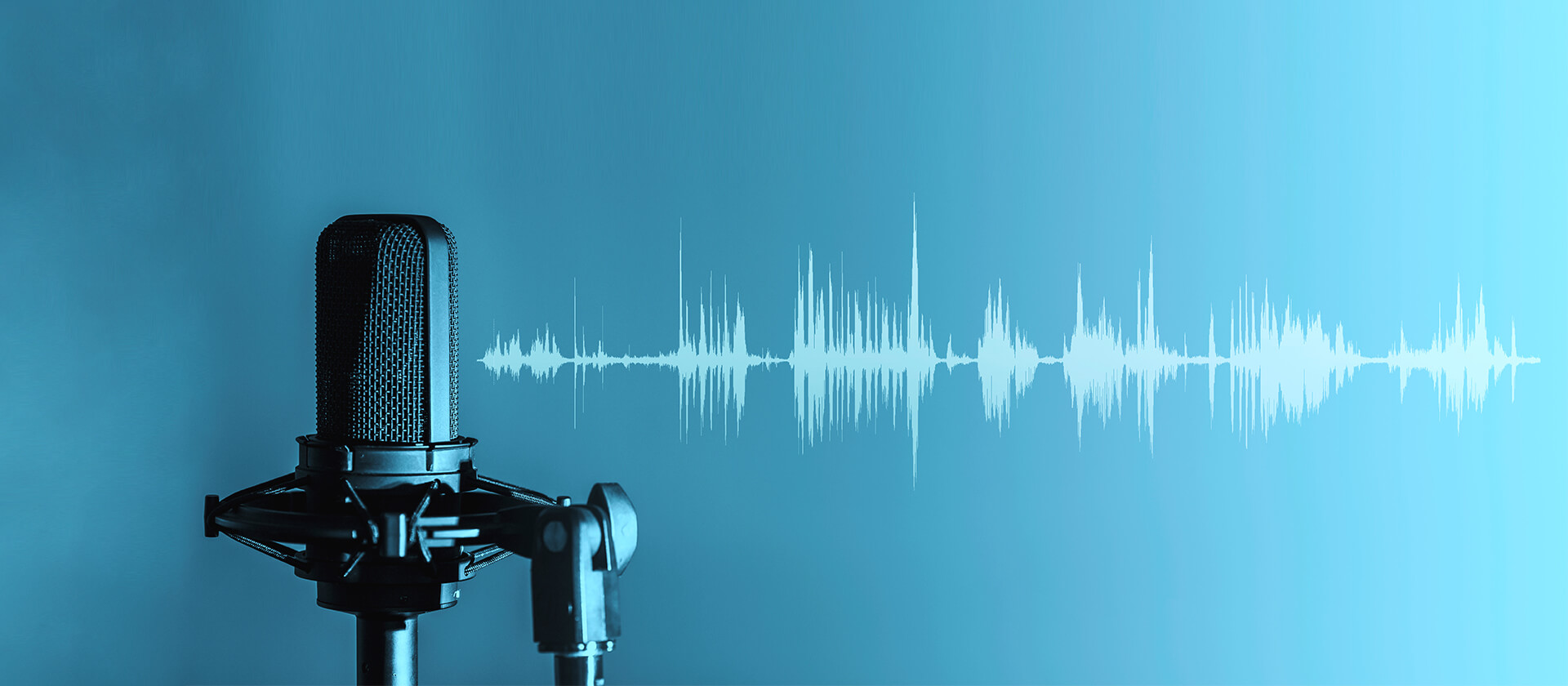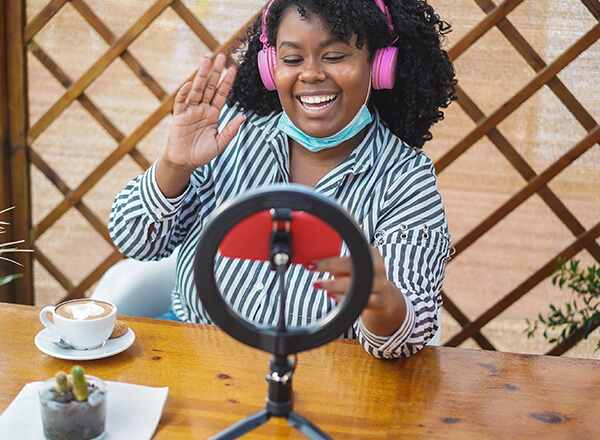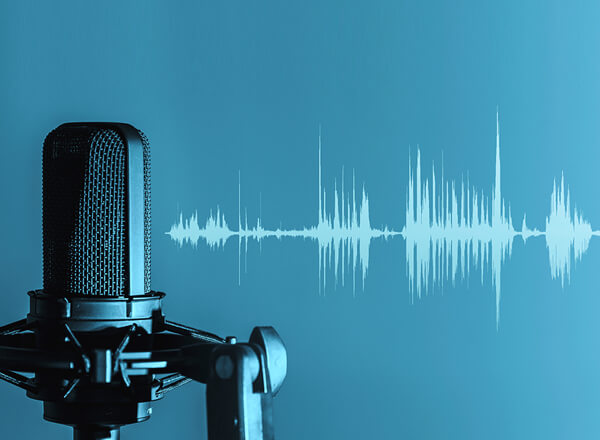Want a heads up when a new story drops? Subscribe here.
Broadcast television, radio, and print have been challenged for over a decade by a multitude of online media channels. They know no borders and are evolving at a quick pace to cater to diverse audiences. Electronic media empowers users to take control of entertainment and information from mass media that dominated prior to the digital age. Global audiences are increasingly abandoning traditional venues in favor of more engaging forms of storytelling that give users the feeling of being there. Alternative media formats are reinventing how stories are told. Podcasting, in particular, is taking a new approach to informing, educating, and interacting with audiences – one of flexibility, intimacy, and interactivity. Blending traditional and digital media, audio content offers listeners an immersive experience due to its more informal and conversational nature. Good podcasts are participatory, interactive, and thought-provoking and extend an invitation to experience connection. Their power lies in creating something valuable for people to reflect upon, react, and share with others. Podcasts that help people to refocus their understanding and perspectives with the stories they tell have a loyal, active, and connected audience. For marketers, audio content provides an opportunity to connect with listeners and foster a personal, deeper connection through the intimacy and power of their voice. This is also an opportunity to build a brand community through a medium that opens space for conversation and engagement. It is also a revenue generating opportunity not to miss. With that in mind, here are 8 compelling reasons podcasting should be part of your brand’s smart content strategy.
Table of Contents
1. Leverage the Power of Storytelling
Podcasts enable marketers to share personal stories that others identify with. Sharing causes people to reflect on the narrator’s words and gain self-knowledge through introspection. Stories that strike a personal cord make people question and answer who they are and what helped them to become who they are today. Moving narratives encourage self-exploration to answer all the questions we have about ourselves. Such questions can be: What am I scared of and what worries me most? Am I holding on to something? What are my values? Am I learning from mistakes? Do I repent something and why? Why am I unsatisfied with life? How can I take better care of myself?
Stories allow people to achieve self-realization and empower them to change their own life story. For tellers, this is a powerful method to communicate and invite listeners to connect through experiences they identify with. People are drawn to narratives that are in one way or another about them. Brands can harness this attraction by telling stories that are genuine, thought-provoking, and inspirational.
2. Podcast Following Is Growing
One study by Edison Research reveals that the share of Americans who have listened to a podcast exceeded 50 percent in 2019. While the majority of people (81 percent) listen to AM/FM radio in the car, 26 percent say they are listening to podcasts. At the same time, familiarity has been steadily growing. Just 22 percent of Americans had heard of podcasting in 2006 compared to 70 percent in 2019. Audio book consumption has also increased, which is a clear trend toward audio media. In contrast, social media usage has been declining, especially among young users.
3. Podcasting Drives Recall
Advertising delivered by a host has been found to enhance brand recall. According to a 2021 report by Nielsen, host-read advertisements have a recall rate of 71 percent which drives recommendation and purchase intent. The majority of heavy users (62 percent) visited a company website for more information about the advertised product while 40 percent visited to order or purchase the product. Additionally, 10 percent of listeners visited a retail location to make a purchase, and 4 percent called a number. When it comes to genre, top choices among heavy listeners are science, society and culture, true crime, news, and history. Top podcast genres that people listen to at work are business, society and culture, true crime, news, and comedy.
The 2019 study by Nielsen measured how likely consumers are to purchase a product across different consumer categories. The study found that 96 percent of podcast listeners or 119 million households spend more on milk, and 74 percent or 92 million households spend more on refrigerated juice. Top genre categories among milk fans are games and hobbies, kids and family, music, and religion and spirituality. The study also reports a lift in purchase intent across genres, including business (14 percent), news and politics (12.8 percent), and society and culture (9.2 percent). Overall, 69 percent of respondents said that they learned about new products and services via podcast ads.
4. Reach Diverse Audiences
Podcast listeners in the U.S. have significantly grown in number, and audience diversity has also increased. In 2020 by age group, 46 percent of listeners were between 22 and 24, 44 percent between 24 and 54, and 20 percent – 55 and over. (Improve Podcast) The 2021 Nielson study shows that 59 percent of podcast users are white, followed by Hispanic (19 percent), African American (13 percent), and Asian American (5 percent). There is also a considerable variation when it comes to genre appeal. Top choices among white listeners are society and culture, science, and history while Asian Americans mostly listen to business, science, and technology podcasts. African American listeners are more likely to react to advertising than other groups. Overall, 12 percent of African Americans say they visited a retail location to make a purchase, compared to 10 percent of Hispanic Americans and 8 percent of all podcast listeners.
As the podcast audience in the U.S is quite diverse, niche marketers can target different groups across genres. For example, top genre choices among Hispanic Americans are kids and family and leisure. Listeners in the kids and family and games and hobbies groups are the heaviest consumers of frozen pizza, cookies, and candies. This makes Hispanic Americans a target group of producers in the respective niches. Likewise, products such as tea, oral care, nuts, liquor, and vitamins are heaviest consumed by fans of health and living podcasts. (Podcast Trends) Black Americans are more likely to listen to health and fitness podcasts than other groups.
Tip: Hundreds of growing businesses use Socialfix to create inspirational podcasts and showcase their products.
5. Podcasting Is Cheap
You can start your own podcast with almost no money. Besides having a good topic to discuss, all you need is:
- Computer or laptop
- Mic stands
- Headphone amplifier
- Headphones
- Pop filter
- Mixer
- Audio interface
- Microphone
- Camera (if you’re looking to turn post your podcast to YouTube as well)
While there is a lot of gear that you can add to the list, that doesn’t mean you are really going to need it. Plus you can always upgrade it later.
6. Create Reusable Content
Each episode that you create can be later repurposed into different pieces of content and published on social media, your website, or blog. You can create Facebook or YouTube thumbnails, Instagram audiograms, or image quotes. Other pieces of content are live question and answer sessions, blog posts, transcripts, and infographics.
There are plenty of good reasons to create reusable content. While chances are that your followers have already listened to your podcast, repurposing content allows you to tap into new audiences and increase your brand visibility and reach.
Repurposing content is also a way to satisfy the Rule of Seven that marketing guru Dr. Jeffrey Lant formulated. The rule states that you need to contact prospective customers at least 7 times so that they remember you and take action. The important thing here is the message that you are trying to convey and not the number. Most customers can’t make a buying decision the first time they learn about your brand and products. This means that you should strive to be consistent in your marketing efforts and regularly post content on your blog, website, or social media profiles. Repurposing and sharing content is one way to reach potential customers without seeming redundant.
7. Choice of Formats and Genres
Good Choice of Formats
There is a good variety of podcast formats depending on the type of content that your audience wants. The types of podcasts to look into include:
- Monologue
- Conversational
- Interview
- Hybrid
- Repurposed
- Theatrical
- Roundtable
- Storytelling
Storytelling
Storytelling podcasts, for instance, offer listeners an immersive experience. Unlike game show-like and interview recordings, this is a type of narrative-driven show that allows brands to connect with listeners through stories. People love stories because they are shared experiences. They are about journeys and change much like life is about change and creating and recreating ourselves. Life is a journey filled with special moments, celebrations, joys, hardships, and lessons that lead us to our purpose, meaning, and destination in life. In stories, the hero embarks on a journey, overcomes multiple obstacles and trials, and gains deep knowledge and understanding to face the rest of the journey. Sharing a story of how you, as the hero, overcame the odds is a way to connect with listeners who are faced with challenges in life.
Sharing your learning journey and success story is more valuable than simply talking about your products and the benefits they offer. Success stories resonate with customers and how the challenges they faced have made them stronger, happier, and more successful. Ultimately, they end up more engaged and willing to learn about your business and product range.
Interview
Another variety, the interview podcast is where you invite a different guest for each episode. The main advantage of using this format is that it opens your show to different points of view, stories, and experiences. This means a lot of variety for listeners, including a wide range of topics, perspectives, and unique insights. And if your guests like the episodes they were on and share them on social media, this opens your podcast to a wider audience. The downside is that this format is quite popular which will make it more difficult to stand out.
Monologue
A third format that is fairly common is the monologue or solo podcast. It is a good choice for marketers who have specific expertise and love the creative freedom. With the solo format, you will have complete control over the content and message that you want to deliver. It is up to you to decide what is likely to intrigue listeners and how to approach them. As an added benefit, the solo podcast allows you to address your audience more personally and connect on a deeper level. This is what engagement marketing is ultimately about – interacting with online audiences in ways that provide value and foster genuine and meaningful relationships. As a user engagement tool, the solo format provides an opportunity to extend an invitation for dialogue. You can get the conversation started by sharing interesting industry trends, insights, and opinions and then invite listeners to take part in an online community discussion. As marketing is no longer a one-way street but a system of multidirectional interactions, brands need to engage with customers and continuously exchange opinions, reactions, experiences, and emotions.
Choice of Genres
Listening to narrative stories stimulates different parts of the brain. Whether it is a comedy that increases endorphin levels or meditation that causes an oxytocin rush, the brain is more active when listening to audio content. A meditation podcast, for example, can reduce stress and anxiety and reduce symptoms of depression. That is because the soothing sound of meditation music activates the brain’s auditory cortex, thalamus, and brain stem. A hormone called oxytocin is released as a result. Known as the love hormone, it has a positive effect on psychological stability and is associated with trust and empathy. Listening to white noise and relaxing sounds is also shown to improve mental clarity and increase productivity and focus.
And if you are looking for something more stimulating, true crime can be a better choice. There is a good reason why many podcast listeners love this genre. Suspenseful information is processed by a part of the brain called medulla oblongata which produces adrenaline. It increases the rate of carbohydrate metabolism, breathing, and blood circulation and triggers the fight or flight response. Listening to true crime or horror stories also activates the pituitary gland which produces endorphins. Endorphins stimulate the brain’s opiate receptors, boost pleasure, and reduce pain. This type of genre can also stimulate the production of serotonin and dopamine. Serotonin stabilizes our feelings and mood while dopamine drives behaviors associated with pleasurable goals. Both hormones give you the feeling of I’m scared but I like it.
8. Audio Content Is Convenient
Consumers are increasingly overwhelmed by the avalanche of social media posts, opinions, facts and alternative facts, clickbait, gossip, statistics, and news. More and more people are now looking for content that is funny, thought-provoking, inspiring, light, and easy to consume on the go. Audio content is a source of entertainment and information that people can listen to while exercising in the gym, jogging, driving their car, or cooking dinner. Surveys also show that listeners consume podcasts across different settings. People over 35 mostly listen to audio content at home (61 percent), in public transport (20 percent), and while driving (18 percent). According to the Podcast Consumer study by Edison Research, users mostly listen to podcasts at home (81 percent), on the way to work (58 percent), and walking around (41 percent).
Final Thought
There are plenty of reasons why podcasting should be part of your smart content strategy – from reaching diverse audiences and enhancing brand recall to creating reusable content. Most importantly, podcasting enables markers and listeners to make connections. It is a medium that allows you to be authentic and offer content that speaks uniquely to listeners. Telling people who you are, how you became you, and what changed your perspective on life will show your listeners that you have the courage to be open to them. Emotional vulnerability is the key to building close, more resilient relationships with customers. And when the time is right and they genuinely trust you, they will buy from you.
Podcasting fans have steadily grown in number because this format is a unique vehicle for self-actualization. The main reasons for listening to audio content are to stay informed, explore a topic of interest, and learn new things. While video stimulates creativity and social media connects us with other people, podcasting is a medium that requires engagement around areas of growth, self-fulfillment, and self-improvement. Looking to become better versions of themselves, people are naturally drawn to narratives that inspire them to reinvent themselves and change their lives for better. Starting a podcast with this type of a powerful impact is a recipe for marketing success and a way to ensure that listeners are engaged, learning, feeling, and self-actualizing.
Sources:
https://www.edisonresearch.com/infinite-dial-2019/
https://www.nielsen.com/wp-content/uploads/sites/3/2021/02/Nielsen-Podcasting-Today-Feb-2021.pdf
https://www.nielsen.com/wp-content/uploads/sites/3/2021/02/Nielsen-Podcasting-Today-Feb-2021.pdf
https://improvepodcast.com/podcasting-demographics-marketing-guide/
https://improvepodcast.com/top-podcasting-trends-market-ads-consumers-revenue/
https://www.digitalnewsreport.org/survey/2019/podcasts-who-why-what-and-where/
https://www.slideshare.net/webby2001/the-podcast-consumer-2018








